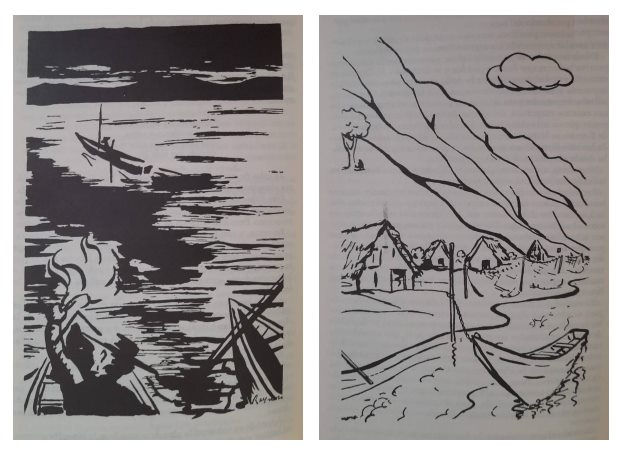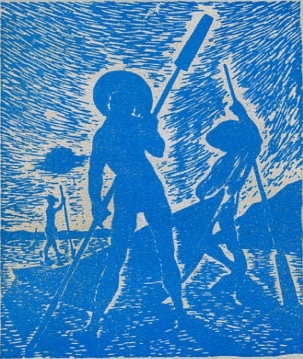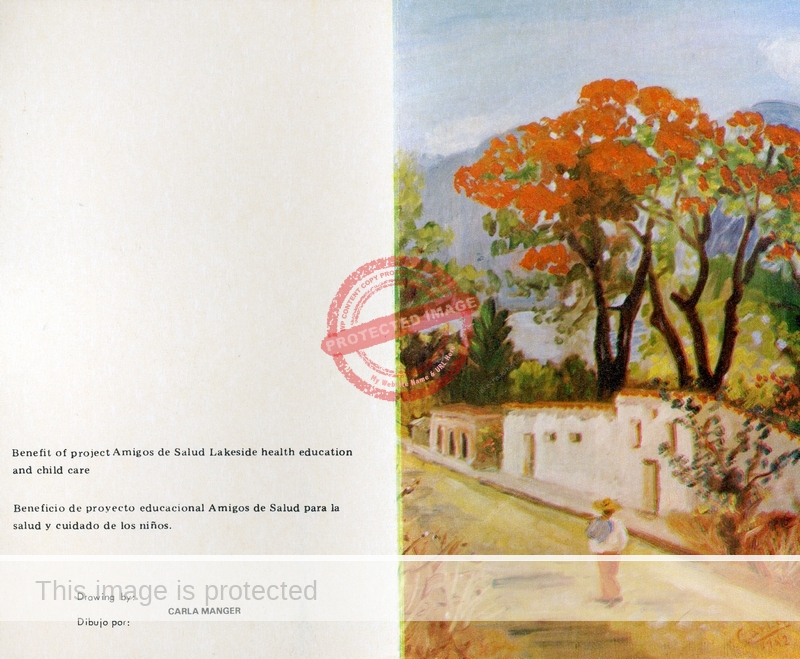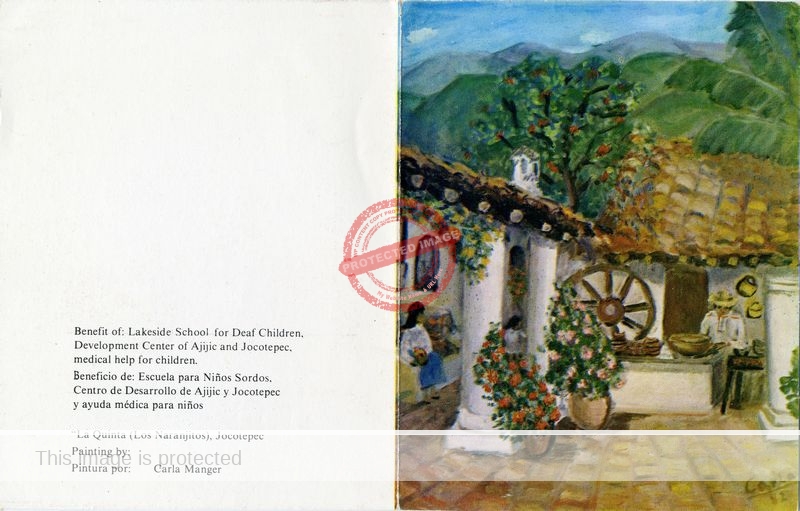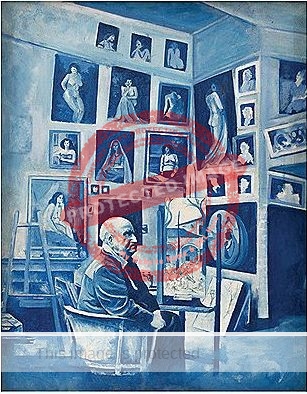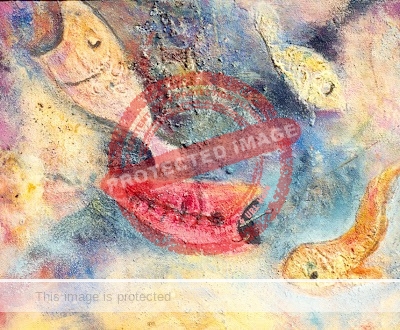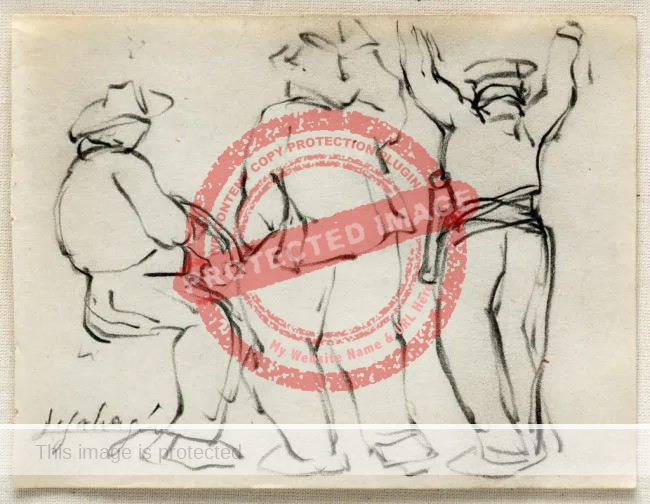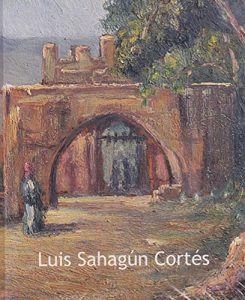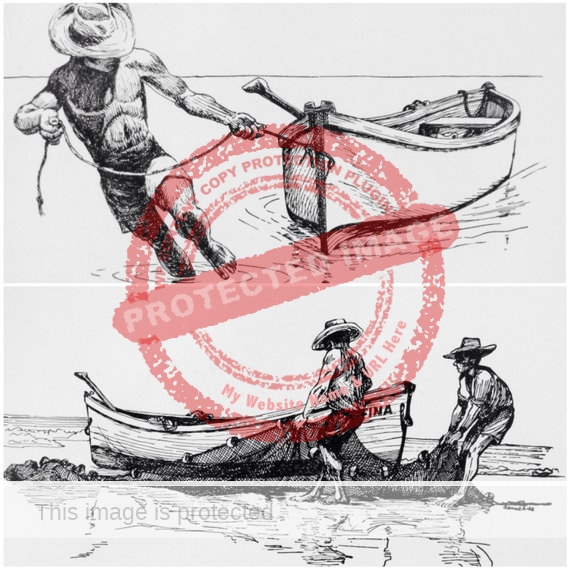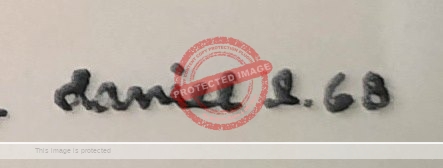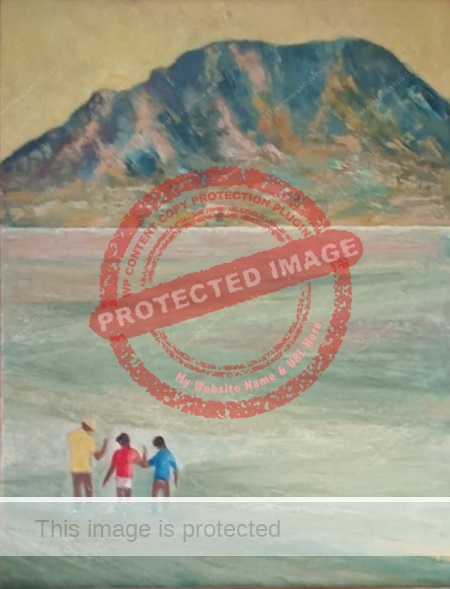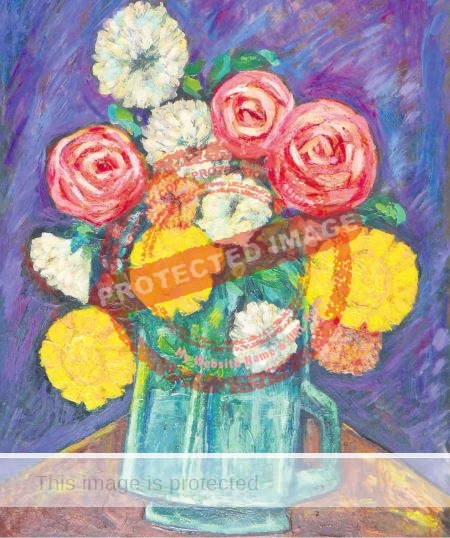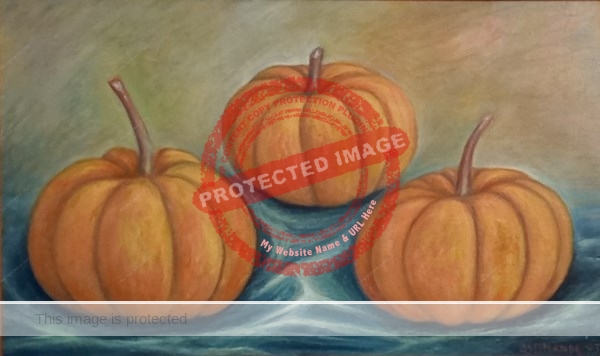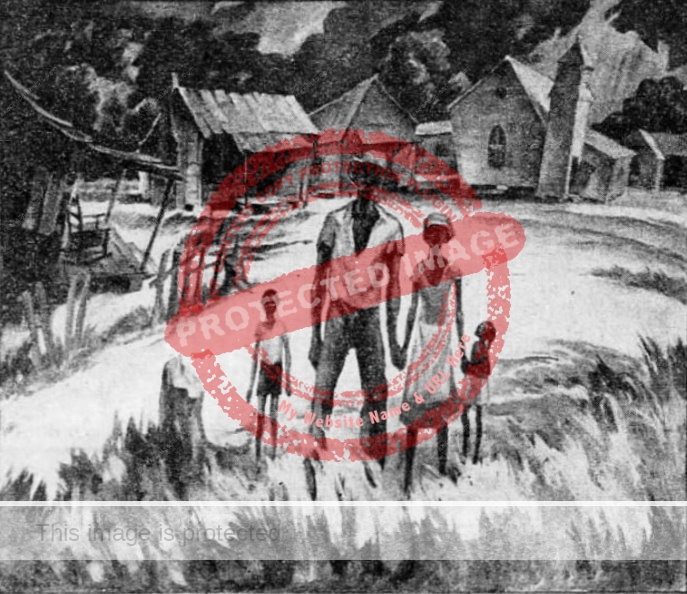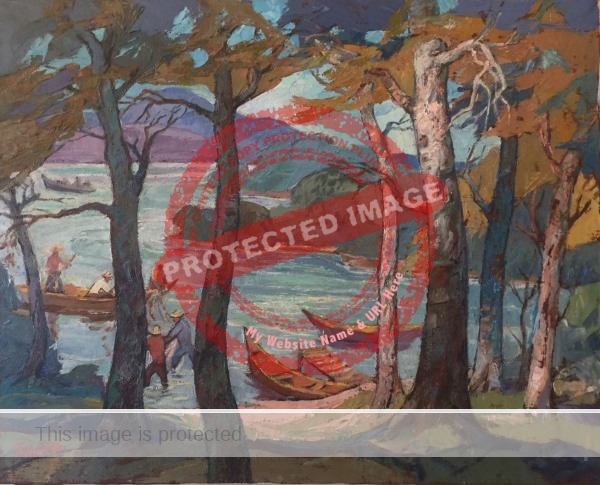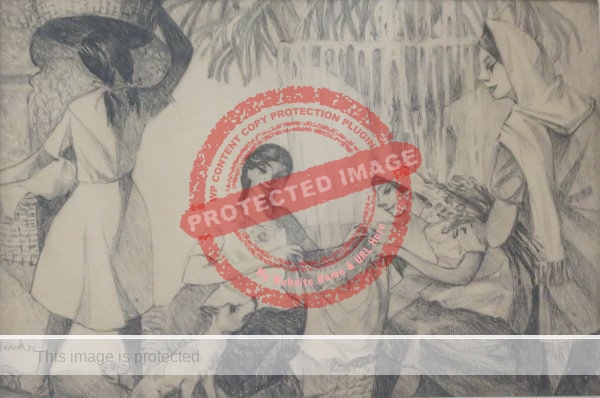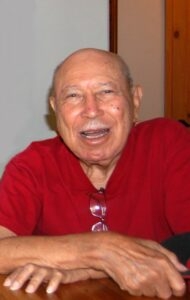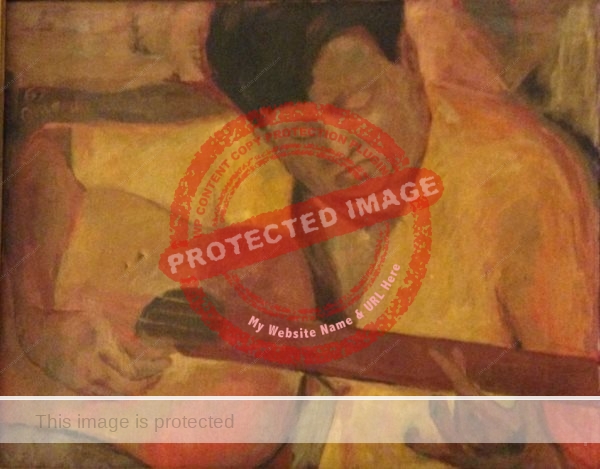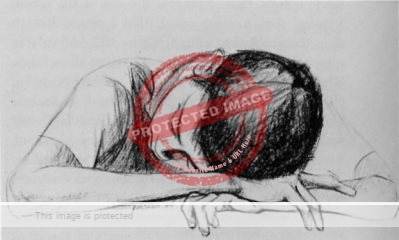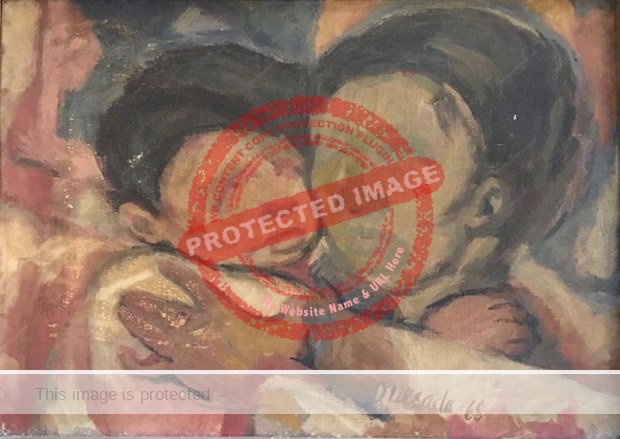Born in Guadalajara on 3 January 1879, Jorge Enciso became a designer, painter, muralist and museologist.
Enciso’s first formal art studies were at the studio of master Brazilian-Mexican painter Félix Bernardelli, who introduced him to impressionism. The illustrious group studying with or working alongside Bernadelli included Gerardo Murillo (better known as Dr. Atl), Luis de la Torre, Rafael Ponce de León and José María Lupercio, who became one of Mexico’s best-known photographers. With Bernadelli’s encouragement, Enciso also later traveled and studied in Europe.
These creative individuals were members of Ateneo Jalisciense, an artistic-scientific society founded in July 1903 which organized concerts, presentations, lectures, discussions and exhibitions, including several in which Enciso participated. Other distinguished members of Ateneo Jalisciense included Tomás V. Gómez, Alberto Santoscoy, Salvador Villaseñor, Luis Pérez Verdía, Enrique Meyer (father of violinist Tula Meyer, who lived for many years in Ajijic) and violinist Alfredo Levy, who was Chapala’s mayor (presidente municipal) in 1919.
In 1906, Enciso contributed with other artists and writers to a short-lived magazine called Savia Moderna. The cover of the first issue featured a Diego Rivera drawing of an indigenous man, shown in profile. It linked to a poem inside (by Emilio Valenzuela) including the words: “He fixes his gaze on the sun and moves forward, his bare feet on rocks and thorns. What noble yearning is hidden in his eyes, where the sun’s rays can barely penetrate?”
The May 1906 issue of Savia Moderna included a painting by Enciso of Lake Chapala. (If you have a photograph of this or any other Lake Chapala painting by Jorge Enciso, please get in touch!)
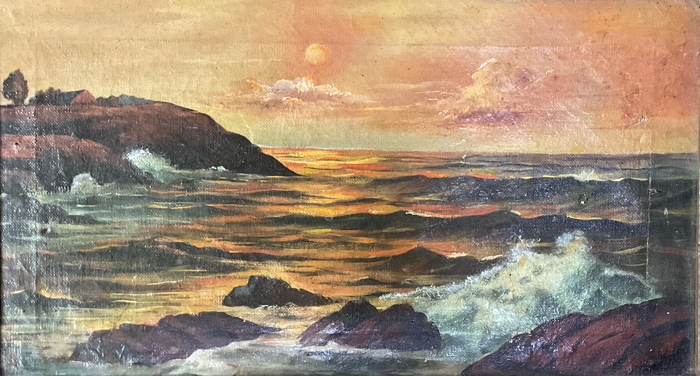
Jorge Enciso. Undated. Manzanillo. Credit: Museo CJV (Claudio Jiménez Vizcarra).
In 1907, Enciso moved to Mexico City to continue his studies at the National School of Fine Arts of San Carlos. In a major exhibition that year, ‘Exposición de Savia Moderna’ at the Palacio de Bellas Artes in Mexico City, one of Enciso’s Lake Chapala paintings—described as a picture of the lake, with its clear water colored in oranges and violets—was selected for display.
Like most of his fellow students from Guadalajara, Enciso pushed the envelope of what was considered ‘conventional art’ at that time, and recognized the need for a nationalist approach which went well beyond merely imitating what was happening in Europe or elsewhere. Enciso later became an instructor at the National School of Fine Arts.
Enciso exhibited paintings in Guadalajara in an Industrial, Artistic, and Commercial Exhibition (1908) and in the Centennial Exhibition (1910), where his work, titled “Anáhuac” was a life-size portrait of an indigenous individual. He also participated in various shows organized by the Jalisco Athenaeum.
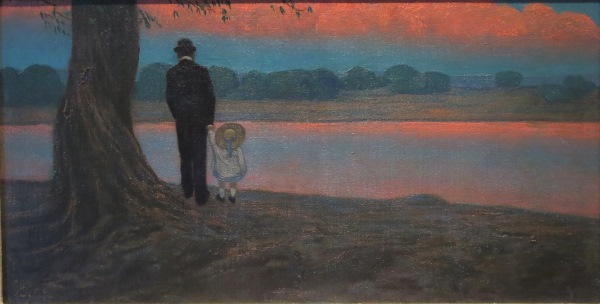
Jorge Enciso. 1910. Paisaje con figuras (Landscape with figures). Credit: Instituto Cultural Cabañas exhibit, 2017.
In Mexico City, when commissioned to paint murals on the walls of two now-demolished schools, Enciso adopted a style that clearly evoked pre-Hispanic themes.
His good friend José Juan Tablada made sure that Enciso’s landscape painting was appreciated, writing in 1927 that:
his work, though small in quantity, deserves recognition. He was the first of our painters to be moved by the twilight and nocturnal aspects of Mexican nature. He painted landscapes of Lake Chapala and of villages with the typical flora and architecture of our country, using neutral, yet elegant, color harmonies. Due to his palette of subdued, muted colors, Enciso could be called a Whistlerian painter.”
Enciso abandoned painting in 1915 to dedicate himself to the preservation of Mexico’s pre-Hispanic and colonial artefacts and monuments. After being appointed to a federal position as General Inspector of Artistic Monuments in 1916, Enciso co-founded, with Ixca Farias, the Regional Museum in Guadalajara in 1918, and helped found Mexico’s National Institute of Anthropology and History (INAH) in 1939, later serving for a time as its director.
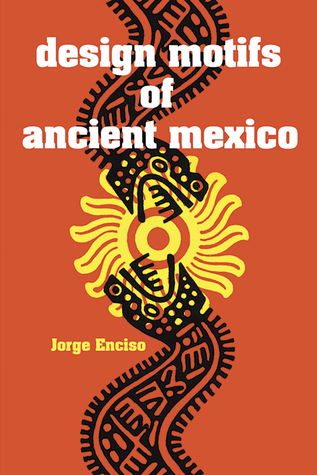
Enciso’s most ‘read’ work is undoubtedly his 1947 book titled Sellos del Antiguo Mexico, reprinted six years later in the U.S. by Dover Publications as Design Motifs in Mexico. All the designs are from ancient ‘sellos,’ clay handstamps used to decorate pottery and other objects. As claimed on its back cover, the book has stamps representing “plumed serpents, calendrical elements, wind gods, insects, toads, lizards, birds, real and mythological animals, flowers, demons, the human head and figure, and hundreds of abstract ornamental designs derived from carved seals of the Aztec, Maya, Totonac, Zapotec, Olmec, Toltec, and other early Mexican cultures.” The designs, offered ‘royalty free’ with virtually no restrictions on their use, have been widely used by generations of graphic designers worldwide.
Enciso’s designs also have an indirect connection to Lake Chapala. In 1991 several of the designs were chosen by accomplished watercolor painter and poet Aileen Olsen Melby, then a Chapala resident, to illustrate her poetry collection Song for Mexico.
Enciso’s most ‘seen’ work must be Mexico’s coat-of-arms. In 1916, during the presidency of Venustiano Carranza, Jorge Enciso and Antonio Gómez collaborated on a redesign of Mexico’s coat-of-arms, which, however, did not replace the previous version until 1932. It was redrawn with minor changes in 1968.
Not surprisingly, when the state of Jalisco decided that 1964 would be a year devoted to the Plastic Arts, Enciso was honored with an award for his painting career, as were several other artists with Lake Chapala connections, including José Othón de Aguinaga, Guillermo Chávez Vega, José María Servin and José Guadalupe Zuno.
Jorge Enciso died in Mexico City in 1969.
Sources
- José Juan Tablada. 1927. La Historia del arte en México. Editora Águilas, pp. 244-245.
- El Tiempo, 23 June 1907, 9.
- Savia moderna: May 1906.
- Ixca Farías. 1943. Casos y cosas de mis tiempos. Guadalajara: Ediciones del Colegio Internacional.
Comments, corrections and additional material are welcome, whether via comments or email.
